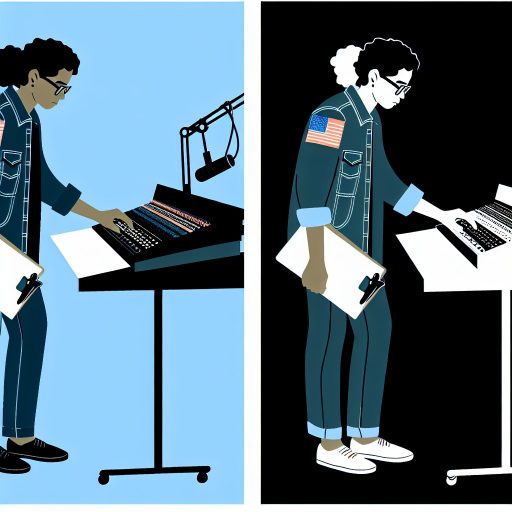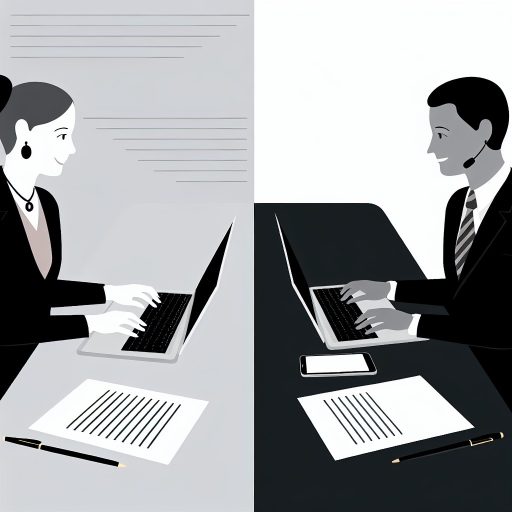Introduction
Typography refers to the art of arranging text in a visually appealing manner.
It involves the selection of fonts, sizes, line spacing, and letter spacing to enhance readability and aesthetics.
In magazine design, typography plays a pivotal role in conveying a publication’s identity.
Good typography grabs attention, sets the tone, and facilitates engagement with the content.
Effective typography impacts how readers perceive the magazine’s content.
It helps communicate the magazine’s message and mood.
For example, a fashion magazine may use elegant, modern fonts to convey sophistication.
Meanwhile, a tech magazine might opt for clean, sans-serif fonts to emphasize clarity.
Typography creates a sense of hierarchy through varied font sizes and weights.
This guides readers through the information seamlessly.
Effects of Typography on Readability
Readability remains crucial in magazine design.
Poorly chosen fonts can frustrate readers and drive them away.
On the other hand, well-selected fonts increase understanding and retention of the content.
Designers consider line length, kerning, and leading to ensure text flows well.
Optimal spacing reduces clutter and enhances the reading experience.
Establishing Visual Hierarchy with Typography
Typography helps establish a visual hierarchy in magazine layouts.
By varying font sizes and weights, designers highlight essential elements such as headlines and subheadings.
This strategy allows readers to skim the content effectively.
A strong hierarchy leads the eye through the page, ensuring crucial information is easily accessible.
Reinforcing Brand Identity Through Typography
Consistency in typography reinforces a magazine’s brand identity.
Transform Your Career Today
Unlock a personalized career strategy that drives real results. Get tailored advice and a roadmap designed just for you.
Start NowEach font choice should align with the magazine’s overall theme and purpose.
This alignment fosters recognition and loyalty among readers.
When a publication consistently uses specific fonts, it becomes memorable.
Readers associate the typography with its content.
Ultimately, typography serves as a powerful tool in magazine design.
Thoughtful font selection and arrangement enhance readability, establish hierarchy, and strengthen branding.
A magazine’s success often hinges on its typography choices because they deeply influence how readers engage with the content.
History of Typography in Magazine Design
Origins of Typography in Print Media
Typography origins trace back to ancient civilizations.
The earliest forms appeared in Egypt, Mesopotamia, and China.
However, Gutenberg’s printing press in the 15th century transformed typography.
This innovation made printed texts more accessible to the masses.
Initially, typography focused on readability.
Typefaces were simple and utilitarian, designed to convey information clearly.
The emphasis was on function over form.
Printers developed typefaces like Blackletter and Garamond, known for their legibility.
These styles dominated the printed word for centuries.
As the printing industry grew, so did the variations in type.
The late 19th century marked a significant shift.
Designers began experimenting with decorative typefaces.
Ornate styles emerged, aiming to capture attention.
Transform Your Career Today
Unlock a personalized career strategy that drives real results. Get tailored advice and a roadmap designed just for you.
Start NowThe introduction of lithography further expanded creative possibilities in print.
Evolution of Typography in Magazine Design
As magazines developed in the 18th and 19th centuries, typography became crucial.
Magazines merged visual appeal with written content.
Early magazines used typography merely for announcements and news.
However, the modern era brought a focus on design and aesthetics.
During the 20th century, typographic evolution accelerated.
Different design movements influenced typography significantly.
Art Nouveau celebrated organic shapes, while Bauhaus emphasized functional design.
These movements introduced new typefaces alongside fresh layouts.
Magazine designers began utilizing typography creatively.
They played with size, spacing, and color to enhance visual impact.
The combination of images and text became harmonious.
Typography began to convey brand identity strongly, creating recognizable styles for different publications.
The advent of digital technology revolutionized typography further.
Designers gained access to endless fonts and tools.
Personal computers and design software democratized typography.
People could now create sophisticated designs with relative ease.
This access expanded the creative repertoire in magazine design.
Impact of Typography Trends on Magazine Layouts
Typography trends have always influenced magazine layouts significantly.
Each era brought unique design philosophies.
Transform Your Career Today
Unlock a personalized career strategy that drives real results. Get tailored advice and a roadmap designed just for you.
Start NowDesigners constantly adapt to these changes, integrating new styles into their work.
- Minimalism: This style utilizes clean lines and open spaces.
- Designers prioritize clarity and simplicity.
- Minimal typography enhances readability and draws attention to content.
- Bold Typography: Large, attention-grabbing fonts became popular.
- This trend allows headlines to stand out.
- Bold typography creates a sense of urgency, directing readers’ attention immediately.
- Handwritten Fonts: These fonts evoke a personal touch.
- Magazines use them to create intimacy with readers.
- They add a human element to polished layouts.
- Geometric Sans Serifs: These typefaces are modern and versatile.
- Their clean appearance complements contemporary designs.
- Designers favor them for a range of magazine styles.
- Layered Text: This trend involves overlapping text with images.
- It creates depth within layouts.
- Layered typography invites readers to explore content dynamically.
Typography can set the tone for an entire magazine.
It not only carries the text but also conveys the publication’s character.
Elegant scripts can evoke sophistication, while bold fonts can suggest modernity.
Furthermore, typography plays a vital role in navigation.
Readers should find it effortless to decipher titles, subtitles, and body text.
Effective typography guides them through the content seamlessly.
Consistent use of type establishes a hierarchy that enhances user experience.
The integration of images with typography also merits attention.
Designers experiment with arrangements, creating stunning visuals.
Overlapping text with photographs establishes a visual dialogue.
This interplay adds dynamism and intrigue to magazine layouts.
Continuing Evolution of Typography in Magazine Design
The history of typography in magazine design showcases ongoing evolution.
From its origins in print media to artistic flourishes in modern publications, typography remains crucial.
Designers continue to push boundaries successfully.
They blend traditional elements with contemporary typography trends.
This rich legacy ensures typography’s essential role in magazine design for years to come.
Typography Elements in Magazine Design
Typeface Selection
Typeface selection is a fundamental aspect of magazine design.
The typeface you choose shapes the first impression.
It communicates the tone and personality of the publication.
Transform Your Career Today
Unlock a personalized career strategy that drives real results. Get tailored advice and a roadmap designed just for you.
Start NowConsider the following points when selecting a typeface:
- Brand Identity: The typeface should align with the magazine’s overall brand identity.
- A sleek, modern typeface suits a fashion magazine.
- A serif typeface may evoke a more traditional feel.
- Readability: Ensure that the chosen typeface is easily readable.
- A complex font may look stylish but can hinder reader comprehension.
- Genre Consideration: Different genres call for different typefaces.
- For instance, playful fonts work well for lifestyle magazines.
- Elegant fonts suit luxury publications.
- Contrast: Use contrasting typefaces for hierarchy.
- Pairing a bold sans-serif with a delicate serif can create visual interest.
- Consistency: Maintain consistency across issues.
- Consistent typeface usage strengthens brand recognition.
Font Size and Spacing
Font size and spacing play crucial roles in magazine readability.
They enhance the visual hierarchy and ensure comfortable reading.
Consider the following aspects:
- Font Size: Use larger font sizes for headlines.
- This draws attention and establishes a clear hierarchy.
- Body text should be large enough to read easily, typically between 10-12 points.
- Line Spacing: Proper line spacing improves readability.
- Use a line-height of 1.5 to 1.6 times the font size.
- Letter Spacing: Adjust letter spacing for elegance and readability.
- Increasing letter spacing can enhance the visual appeal of headlines.
- Avoid excessive spacing in body text.
- Text Blocks: Break large blocks of text into smaller paragraphs.
- This encourages readers to engage with the content.
- White Space: Embrace white space to avoid clutter.
- It helps guide readers through the content and makes the magazine feel more inviting.
Alignment and Formatting Choices
Alignment and formatting choices significantly impact the overall structure.
Proper alignment creates a cohesive look, allowing readers to navigate easily.
Here are key considerations:
- Alignment: Use left alignment for most text.
- This enhances readability as it provides a consistent starting point for readers.
- Centered text often suits headlines and short quotes.
- Justification: Avoid fully justified text in body paragraphs.
- It can create uneven spacing, making it harder to read.
- Left-aligned text is generally preferred.
- Bulleted and Numbered Lists: Lists enhance scannability.
- Use them for key information, benefits, or steps.
- They provide structure and break the text visually.
- Hierarchy Through Size and Weight: Use different font weights to establish hierarchy.
- Bold text for headings and regular weight for body paragraphs creates clear distinctions.
- Style Variations: Incorporate italics and underline sparingly for emphasis.
- Overusing these can lead to confusion.
Integration of Typography with Imagery
Combining typography with images requires a thoughtful approach.
Typography should not compete with images but should complement them.
Consider these tips for seamless integration:
- Contrast with Backgrounds: Ensure text remains legible against backgrounds.
- Use solid colors or overlays behind text when using busy images.
- Image Placement: Position images strategically to flow with the text.
- Break up the page to create visual interest without disrupting reading flow.
- Typography as Graphic Elements: Treat typography as part of the graphic design.
- Experiment with texture and color that aligns with the magazine’s theme.
- Consistent Style: Maintain a consistent style throughout.
- This ensures cohesive branding and prevents design clash.
Effective Typography to Enhance Magazine Appeal
The right typography can elevate magazine design from ordinary to extraordinary.
Thoughtful typeface selection improves the reader’s first impression.
Appropriate font sizes make content visually appealing and easy to read.
Intelligent formatting guides readers through the magazine seamlessly.
Typography communicates the essence of the publication clearly.
It engages readers effectively when used with attention to detail.
Embrace typography elements with passion and care to resonate with your audience.





